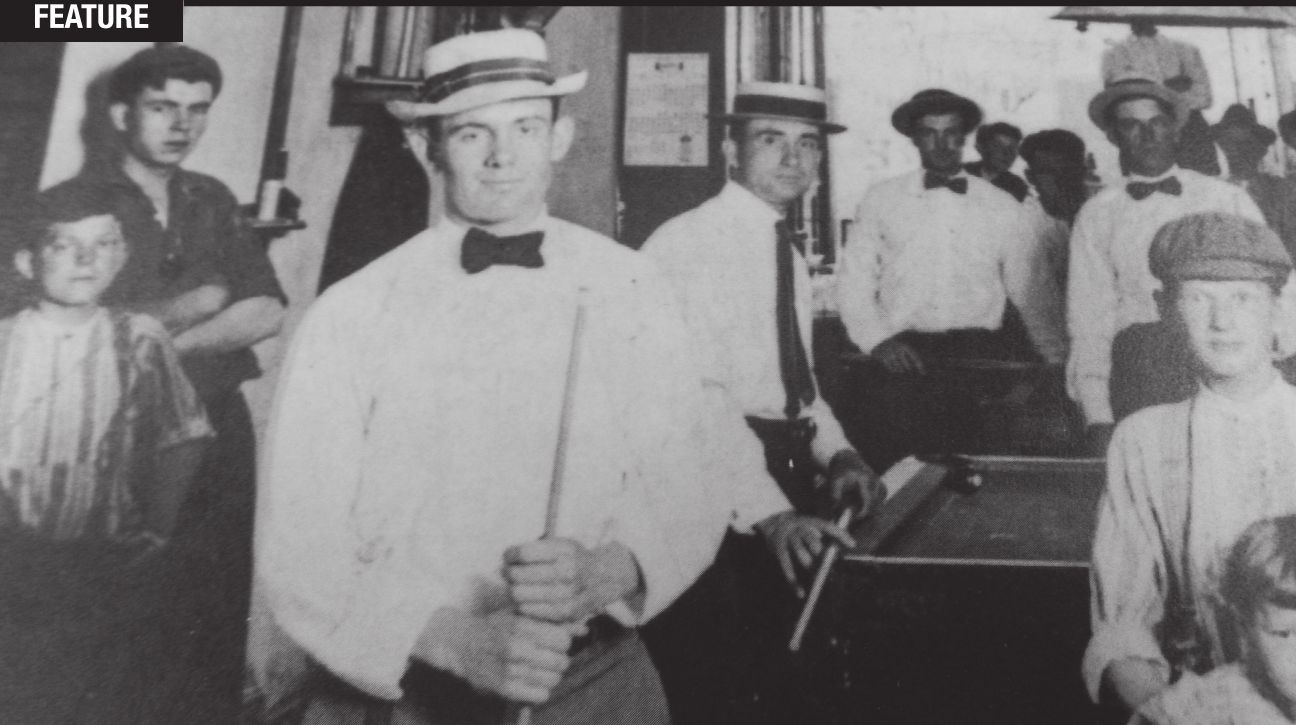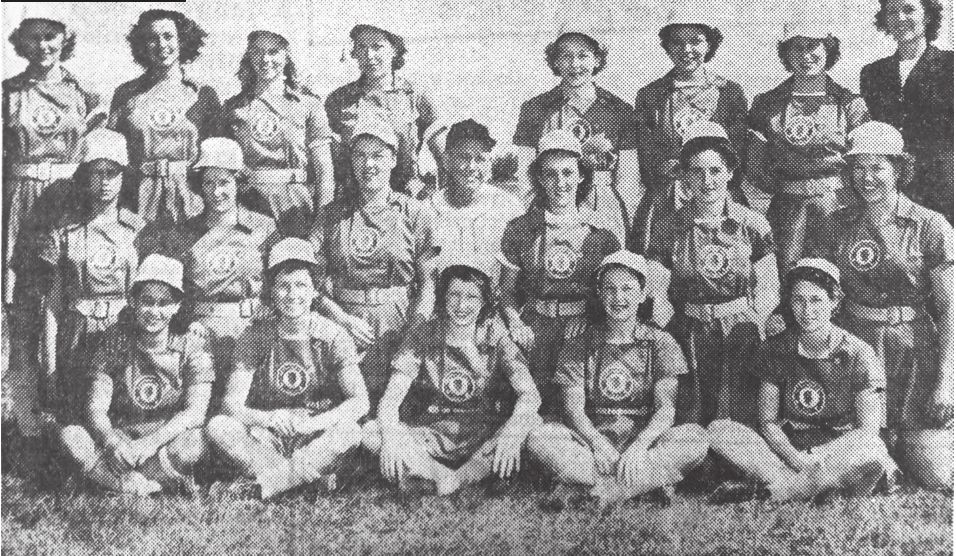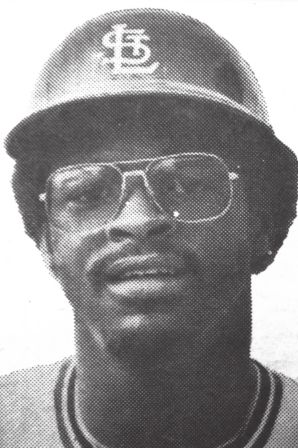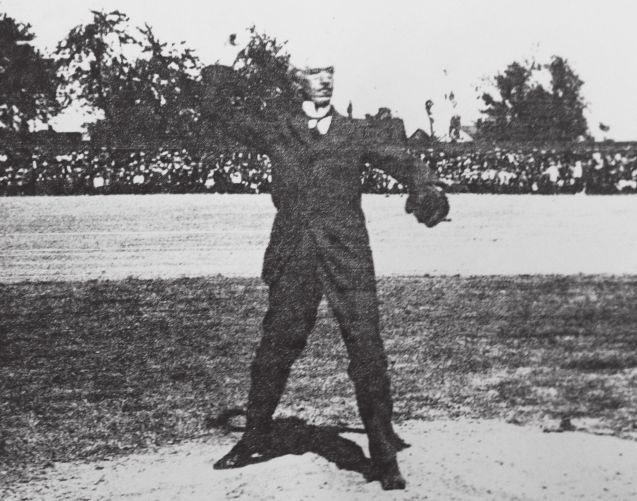
Take me out to the ballgame
A brief history of Springfield baseball
SPORTS | Bruce Rushton
In almost every large town in the state, base ball clubs have been organized this spring. We notice in our exchanges, not only in this state but all states, that this game is more popular than ever. It certainly affords amusement and healthful recreation, and is peculiarly adapted to the physical wants of young men whose occupations seem to weaken and encrust the system. We vote for a club in this city, and not only one club, but several. Let our young men take hold of the matter and put it through.
– Illinois State Journal, May 10, 1866
It began in Springfield one year after the end of the Civil War.
Andrew Johnson was president and widely despised. Copperheads were considered in political discussions. Newspapers kept careful track of cholera, reporting regularly on how many had been stricken and how many had died in towns between St. Louis and Chicago. And Springfield, back in the spring of 1866, was on the cusp of falling for the national pastime.
It was the start of baseball in a town that has never had a major league franchise and has only intermittently enjoyed minor league teams with paid players. Springfield has lured players and pillars of the game both legendary and forgotten. Some stayed for a season, some for a day, some for a lifetime.
Satchel Paige. Josh Johnson. Kenesaw Mountain Landis. Ray Chapman. Joe DiMiaggio. Mickey Mantle. A. Ray Smith. Seth Brock. The San Diego Chicken.
Springfield was behind the times at the very beginning. Jacksonville, Illinois College and Decatur already had clubs when the Illinois State Journal in the spring of 1866 urged that a team, or better yet teams, be organized in the capital city. The sport was new enough to locals that the newspaper published the rules first written down two decades previously in New York.
“It is very easy to learn, and is capital sport, barring the cannon ball which the players are expected to catch in rather soft hands,” the newspaper intoned. “Ladies will enjoy the game, and of course are expected as admiring spectators.”
Five days later, on May 15, 1866, 30 men gathered at the Statehouse to organize the city’s first club, dubbed the Capitals. The next day, the Olympics were born at another meeting. By the end of the month, there was a third club, the Eagles. Before season’s end, at least a half-dozen clubs called Springfield home. The Capitals, considered the best, met regularly at the Supreme Court room in the state Capitol.
The Capitals and Olympics, considered the city’s best, met for the first time on July 28, 1866, playing in heat so withering that two players had to leave the field at Sixth and Monroe streets.
“Several ladies were present, who seemed to enjoy the sport exceedingly, and, like ladies generally, exhibited their partisanship in small screams of approbation (generally at the wrong time),” reported the Journal, which consistently noted the presence of women at games. Historians say that women were encouraged to show up at early baseball games to reduce drinking, gambling and assorted forms of lout-ish behavior by men.
The Capitals won, 67-41, and the score wasn’t an anomaly. Box scores from the time show that one team would score as many as 90 runs in a game, with neither side hitting more than one or two home runs.
The reasons for football, even basketball, scores in baseball’s early days are numerous and myriad, says Thomas Shieber, senior curator at the National Baseball Hall of Fame in Cooperstown, New York. For one thing, no one wore gloves. Crude fields invited bad hops. And rules were different. If batted balls first bounced in fair territory, they were considered fair, and so-called fair-foul hitters flourished by hitting balls that touched ground just in front of home plate, then zinged to one side or the other.
“It can go quite a long way – if there was a dugout there, it would be going into the dugout,” Shieber says. The field of play was thus effectively enlarged, with first and third basemen forced to play close to foul lines, which opened gaps elsewhere.
A tournament scheduled for
Bloomington on Sept. 11, 1866, featured a $50 prize and was supposed to
draw clubs from as far away as Detroit and St. Louis, according to an Illinois State Register story published two months prior to the contest.
“Subpoenas
in the shape of invitations will be issued to all the organized clubs,
and we give our base ballers of Springfield timely notice to gird up
their loins and prepare for the fray,” the Register announced.
“To fat players, who wish to do the running part, we give seasonable
advice to lose flesh at once, to which we would suggest a mile or two of
running at any time from twelve to two in the day and total abstinence
from lager.”
The
Capitals, due to play in Bloomington, merged with the Olympics seven
days before the tournament began, with the new club being called the
Capitals. Whether a team from Springfield showed up isn’t clear. The
contest unfolded over several days in oft-rainy weather, with no
Springfield team mentioned in stories published in Springfield
newspapers or the Bloomington Pantagraph. Inclement weather curbed attendance, the Pantagraph reported, but an all-star game attracted 600 or so spectators.
That Springfield had fallen in love with baseball was obvious to outsiders.
“There is no cholera there, but they have a complaint not set down in books, which is raging fearfully,” reported the Pike County Democrat in
describing a visitor’s trip to the capital city in the fall of 1866.
“We suppose it may be called ‘base ball on the brain.’ In business hours
on the street, go where you will, and you hear the professional terms
of the game flying in all directions.”
Pioneers and gimmicks Early baseball in Springfield wasn’t exclusively a white man’s game.
The Journal in
1869 reported that a “colored” team called the Dexters had played a
game with an unstated opponent, the outcome of which the paper failed to
report. The paper covered the contest by word of mouth.
“We understand that the game was wellcontested and that considerable money changed hands on the result,” the paper reported.
A
game on Sept. 11, 1875, between two female teams attracted considerably
more attention, with an estimated 200 spectators paying to watch the
Brunettes play the Blondes at a field on North Seventh Street. The
players were paid for their efforts. The game is believed to be the
first between two women’s teams with paid players and admission charged.
“It
is a big deal that Springfield was the first,” says Debra Shattuck of
Rapid City, S.D., who has written a book on women’s baseball scheduled
to be published next year. “The fact that your Springfield women’s team
was drawing a few hundred is actually quite respectable, in terms of the
number of people who were coming to watch them.”
Conceived
as a novelty, the Blondes and Brunettes were the brainchild of Frank
Myers, a local merchant and auctioneer, Thomas Halligan, an auctioneer
who worked in Myers’ showroom, and Seth Brock, a justice of the peace.
They ensured no free shows by surrounding the field with a
nine-foot-high canvas screen. The base paths were 50 feet long instead
of the regulation 90 feet and bats and balls were lighter than those
used by men.
The
Blondes prevailed, 42-38, over the opposing team, which had just eight
players. The six-inning contest that lasted two hours was reviewed
favorably by both the Journal and the Register, which reported that the players wore “jaunty hats” and pants that ended somewhere between knee and ankle.
“Everything…was
done decently and in order, and there was nothing, save, perhaps, the
exhibition of female anatomy, to which exception could be taken, and
even that is frequently discounted in first-class theaters,” the Register wrote.
Both the Register and Journal printed box scores, but not a single player’s name appears in 1875 city directories.
“They
almost always used stage names,” Shattuck says. “It wasn’t necessarily
shame. It had more to do with creating mystery. They would always be
listed so that men in the audience could hope that they would at least
have a chance.”
From
Springfield, the Blondes and Brunettes went to Decatur, then to St.
Louis and then to the East Coast. The media were bemused when a game in
Brooklyn was scheduled.
“What
a crowd there will be to see the match, and with such a susceptible set
of fellows as our Brooklyn boys are, what a number of catches the fair
ball tossers will make, especially the brunettes, who are famous for
that sort of thing,” the Brooklyn Daily Eagle observed, according to a book by James L. Terry.
The
Blondes and Brunettes disbanded about three months after playing their
first game, Shattuck says. But they still proved an inspiration.
In
1883, another pair of touring women’s teams, also called the Blondes
and Brunettes, formed in Philadelphia and played before crowds as large
as 1,500. Early women’s games, Shattuck says, were more Harlem
Globetrotters than New York Yankees, with staged plays and more
theatrics than athleticism. But bona fide women’s teams with players
dubbed Bloomer Girls crisscrossed the nation in search of serious
competition by the century’s end, and men in wigs typically played as
pitchers, shortstops and catchers, Shattuck says. One example is Smoky
Joe Wood, a Hall of Fame pitcher and outfielder who disguised himself as
a Bloomer Girl to play while still a teenager.
From
spitballs to softball In the years before World War I, Springfield
longed for a minor league team with paid players who had a shot at the
big leagues. A franchise was secured in 1903, when backers purchased
the Joliet Standards for $300 and moved the club to Springfield, where
the team was renamed the Foot Trackers. A 1,200-seat grandstand was
hastily added to an 800-seat ballpark at 11 th Street and Black Avenue.
It
marked the start of an on-again-offagain love affair with the minor
leagues that played out over the better part of the next 100 years.
Prior to Springfield entering the Illinois- Indiana-Iowa (Three-I)
League in 1903, just four seasons of minor league ball had been played
in Springfield since 1883, with no team lasting more than a season.
The
local press wasn’t afraid to criticize the Foot Trackers. Soon after
Springfield landed the team (which would, over the years, be known as
the Hustlers, Watch Makers, Senators, Tractors and Browns), the State Journal warned that attendance had been dwindling due to poor play.
“Several
ugly reports are getting about concerning some of the local players,”
the paper intoned after an ugly 8-3 loss to Decatur on Aug. 4, 1903. “If
they are true, and there is good reason to believe they are, baseball
might as well come to an end in Springfield. A baseball player cannot
keep up the saloons at the same time he is trying to keep up his batting
and fielding averages. … Any amount of kicking on the umpire’s
decisions will not atone for a night of carousal.”
The team survived and sometimes thrived.
With
the help of Ray Chapman, who played every position except pitcher and
catcher, the Springfield Senators finished first in the 1910 season with
a record of 88-48. Ten years later, Chapman, then a shortstop for the
Cleveland Indians, was having one of his best seasons ever when he was
struck on the head by a pitch and killed. The 1920 tragedy prompted a
ban on spitballs.
Springfield’s
Three-I team folded in 1915, but lower-tier minor league teams with
such names as the Reapers, Midgets and Merchants helped keep baseball
alive. The city rejoined the Three-I with a new franchise when the
league expanded in 1925. The new team needed a new stadium, and so
construction on Reservoir Park, now called Robin Roberts Stadium, began
in March of 1925. Kenesaw Mountain Landis, the infamously taciturn first
commissioner of baseball, threw out the first pitch in the new
ballfield after a luncheon in which he blasted lackluster efforts to
help disabled veterans.
“It is criminal, and the people should be indicted for it,” the former judge declared.
The
Springfield club folded in 1932 along with the rest of the league, but
the Three-I came back a few years later, and the capital city had a club
in the league until 1950, when the Springfield Browns moved to Cedar
Rapids. The Giants, a D league team, replaced the Browns but played just
one season. J.R. Fitzpatrick, the Giants’ owner, sold the uniforms to a
team in Moose Jaw, Saskatchewan.
“We
did not have to look at the financial statement to know that as a
baseball city in the minor leagues Springfield was a flop,” Fitzpatrick
wrote in an article published in a book of Illinois history. “With radio
and television bringing in the top stars of the entertainment field, no
local or less-than-topflight entertainment could compete.”
Regardless
of the minor leagues, amateur baseball in Springfield thrived during
the first half of the 20 th century, with businesses and fraternal
organizations sponsoring teams whose performances were chronicled in box
scores published in daily newspapers.
The
municipal league games were worth watching, says John Richard “Ducky”
Schofield, who was born in the capital city in 1935 and broke into the
major leagues with the St. Louis Cardinals in 1953. Some amateur
players, Schofield recalls, had minor league experience and were better
than some paid players they competed against.
“A
lot of guys couldn’t make it,” recalls Schofield, whose son Dick played
in the majors for 13 years; his grandson, Jayson Werth, plays for the
Washington Nationals. “They were married, they signed and went away.
They couldn’t make it on $75 a month, so they’d come home and make three
times that much working in a coal mine or something. It was good
baseball. They had some good teams.”
Softball
was at least as popular as baseball, Schofield says, with games at Iles
Park drawing as many as 3,000 spectators during the 1940s.
“Softball at Iles Park was probably one of the biggest attractions in Springfield,” Schofield says.
Not
so women’s baseball. One year after building a stadium on Third Street,
not far from Stanford Avenue, Fitzpatrick in 1948 established the
Springfield Sallies. Schofield’s father had played with the Sallies’
manager in the minor leagues, and so Schofield pitched batting practice
to the women’s team.
“I was in the eighth grade,” Schofield recalls.
“They were pretty good players, some of them.”
The
team’s record, however, suggested otherwise. After one losing season in
Springfield, the team became barnstormers. The team folded in 1951.
AAA
comes and goes In 1977, the ballpark at Lanphier High School was
renamed Robin Roberts Stadium in honor of the pitcher from Lanphier who
had entered the Hall of Fame the previous year. One year later, the
highest level of baseball ever played in the capital city got its start
when A. Ray Smith moved his AAA team from the New Orleans Superdome to
Robin Roberts and began play as the Springfield Redbirds, top farm club
for the St. Louis Cardinals.
Smith
hired Satchel Paige, the legendary Negro League pitcher, as a vice
president whose job was largely watching games in the grandstands with
fans, sometimes alongside Josh Johnson, his former catcher in the Negro
Leagues who had moved to Springfield in the 1960s and taken jobs with
the state boards of education and elections. Smith also brought such
legends as Bob Feller, Warren Spahn, Billy Martin, Mickey Mantle and Joe
DiMaggio to town for banquets.
“He
liked to big-dog it, so to speak,” recalls Paul O’Shea, who recently
retired as planning and design coordinator for the city of Springfield
and served on a baseball advisory committee when the Redbirds landed
here.
Leon
“Bull” Durham, a first baseman and outfielder who lasted for a decade
in the majors, played here, as did Aurelio Lopez, a pitcher who had
starred in a Mexican league before coming to America. He was known as
Senor Smoke while helping the Detroit Tigers to a World Series title in
1984. Springfield called him Taco Gringo during his half-season here in
1978.
Smith threatened
to move the Redbirds after just one season, saying that he was upset by
shabby treatment from the media. After four seasons, the team went to
Louisville. A group of local would-be buyers that included O’Shea had a
preliminary agreement to buy the team for $600,000. Then O’Shea heard
that Smith was still talking to boosters in Louisville.
“We
just backed off after that,” O’Shea recalls. The Cardinals provided
Springfield with an A league franchise in the Midwest League after the
Redbirds departed, and several future stars, including Ray Lankford,
Todd Zeile and Vince Coleman, passed through the capital city.
“It
was a nice place to play,” recalls Mike Pitttman, a pitcher who stayed
in Springfield and became a developer after his career was cut short by a
rotator cuff injury. “It was one of the best cities that I played in
back in the Midwest League.”
Pittman
recalls playing before a crowd of 6,000 that came not so much to see
baseball as to watch the antics of the San Diego Chicken, a mascot that
became a national sensation during the 1980s. Dwindling attendance and
dissatisfaction over the condition of Robin Roberts Stadium prompted the
St. Louis Cardinals to sell the Springfield franchise after the 1993
season. The Springfield Sultans, a Class A club in the Padres and then
Royals farm system, played for two years, followed by a few independent
minor league teams. The Springfield Sliders, stocked with collegiate
players, now call Springfield home.
Whether it’s the Sliders, the Redbirds or the Sultans, baseball teams in Springfield have always been appreciated, O’Shea says.
“For the most part, they all served their purpose,” O’Shea says. “It’s always a fun time at the ballpark.”
Contact Bruce Rushton at [email protected].